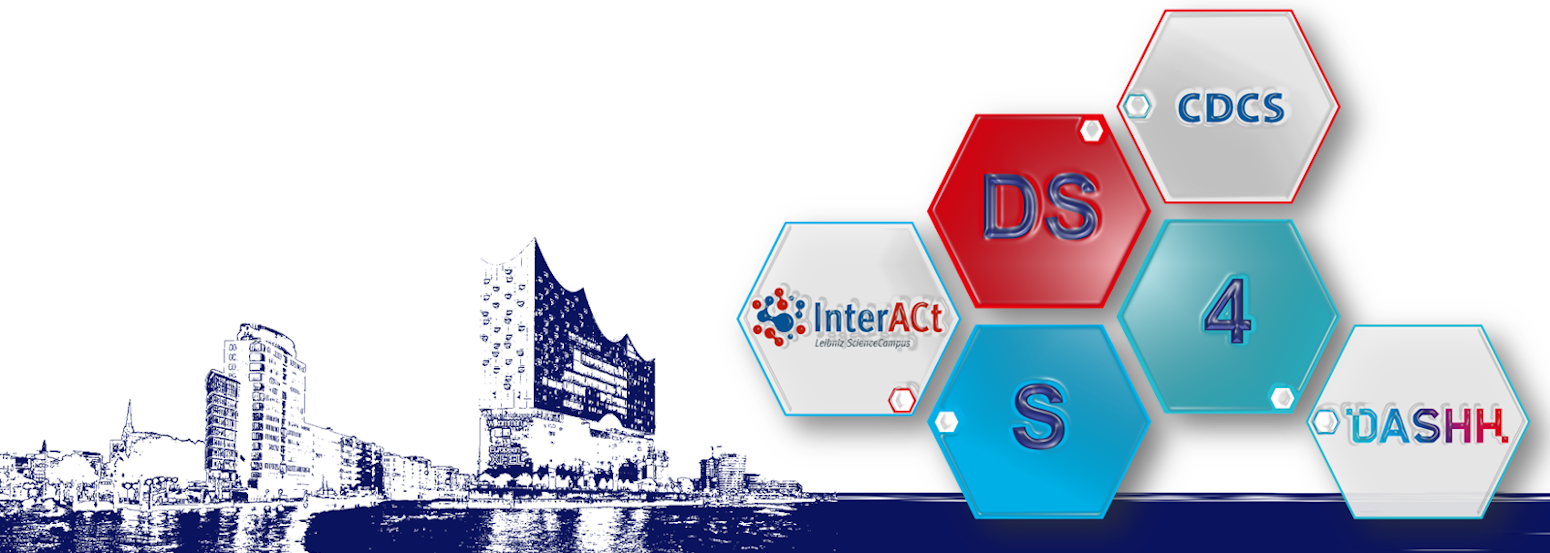DS4S - Data Science for Science

Wednesday, 13.4.2022 - 4 pm
Prof. Adrian Mancuso will talk about the data science challenges at the European XFEL
We, the graduate school Data Science in Hamburg - Helmholtz Graduate School for the Structure of Matter (DASHH), the Leibniz ScienceCampus InterACt (LSC InterACt) and the Center for Data and Computing in Natural Sciences (CDCS) are currently organizing a new series of networking events entitled Data Science for Science (DS4S) to enable exchange and networking across disciplines covered in the metropolitan region Hamburg. Therefore, we invite all interested researchers to join the biweekly events which are scheduled on Wednesdays at 4 pm.
Researchers from all partner institutions are invited to present different aspects of (envisioned) data science research and the corresponding application fields. The new series is an extension of our former Hamburg COVID-19 Series, which received a lot of attention and positive feedback, although having a much broader scope now. The event is currently organized online, but we hope that we can extend our series to an on-site event with talks and a subsequent networking event by June.
The second topic of our DS4S networking series will be presented by Prof. Adrian Mancuso (leading scientist, Scientific Instrument SPB/SFX, European XFEL) on April 13th, 2022 at 4 pm. He will talk about the data science challenges at the European XFEL. His talk is entitled "Exploiting voluminous data from a high repetition rate X-ray Free Electron Laser for Science: How more can really mean more when it comes to XFEL data".
Abstract
The European X-ray Free Electron Laser (EuXFEL) [1] is a source of ultra bright, ultrashort X-ray pulses that allow one to probe the structure of matter in unprecedented ways [2]. It is also presently the highest repetition rate XFEL in operation, producing more than an order of magnitude more pulses per unit time than other operating XFELs around the world. But what does this really mean for science?
In this seminar, I will present examples of experiments that collect voluminous data at the SPB/SFX instrument [3] of the European XFEL—typically thousands to millions of two-dimensional image frames. I’ll show the basic outline of these experiments in serial femtosecond crystallography [4—8], single particle imaging [9, 10] and more to demonstrate that in each of these cases more data really does mean more science—either as a better quality outcome or more information. Finally, I’ll identify publicly available data set(s) of a similar nature for data researchers to explore and enjoy at their leisure.
If you want to contribute to this series and looking for collaborations with researchers from Hamburg concerning a specific method or application field, feel free to contact us via the contact button.
If you are interested in our talks and want to receive regular updates on this series, subscribe to our mailing list https://bit.ly/3hTStBa
We are especially grateful for the support of this series by the Joachim Herz Foundation.
----------------
[1] Tschentscher, et al, Applied Sciences, 7 (6), 592 (2017)
[2] See, for example, https://www.mdpi.com/journal/applsci/special_issues/science_xfel and much more.
[3] Mancuso, et al, Journal of Synchrotron Radiation, 26 (3), 1-17 (2019)
[4] Wiedorn, et al, Nature Communications, 9 (1), 4025 (2018)
[5] Grünbein et al, Nature Communications, 9 (1), 3487 (2018)
[6] Yefanov, et al, Structural Dynamics, 6, 064702 (2019)
[7] Pandey, et al, Nature Methods, 17 (1), 73-78 (2020)
[8] Pandey et al, IUCrJ, 8 (6), 878-895 (2021)
[9] Ayyer, et al, Optica, 8 (1), 15 (2021)
[10] Zhuang, et al, IUCrJ, 9 (2), it5025 (2022)